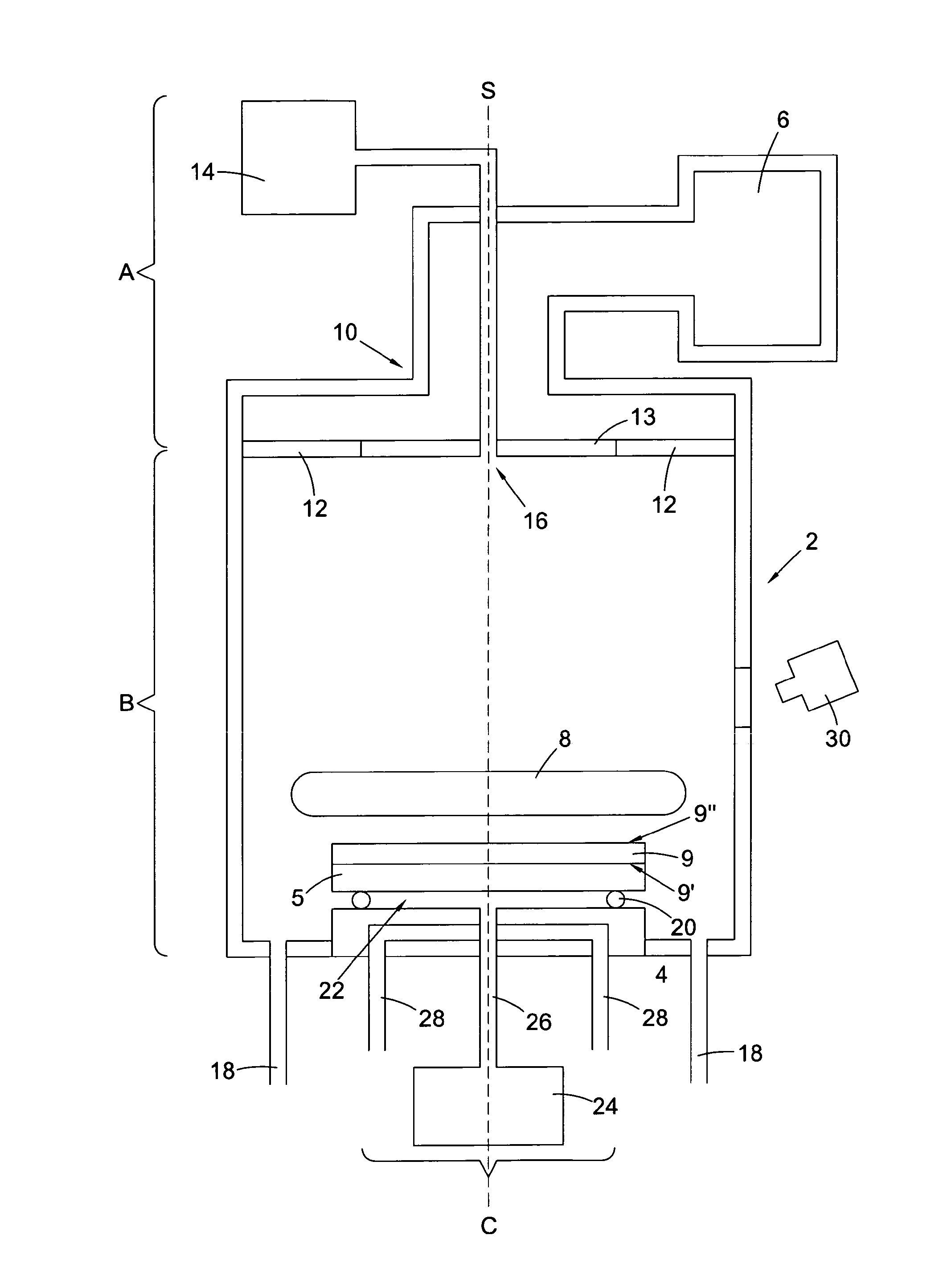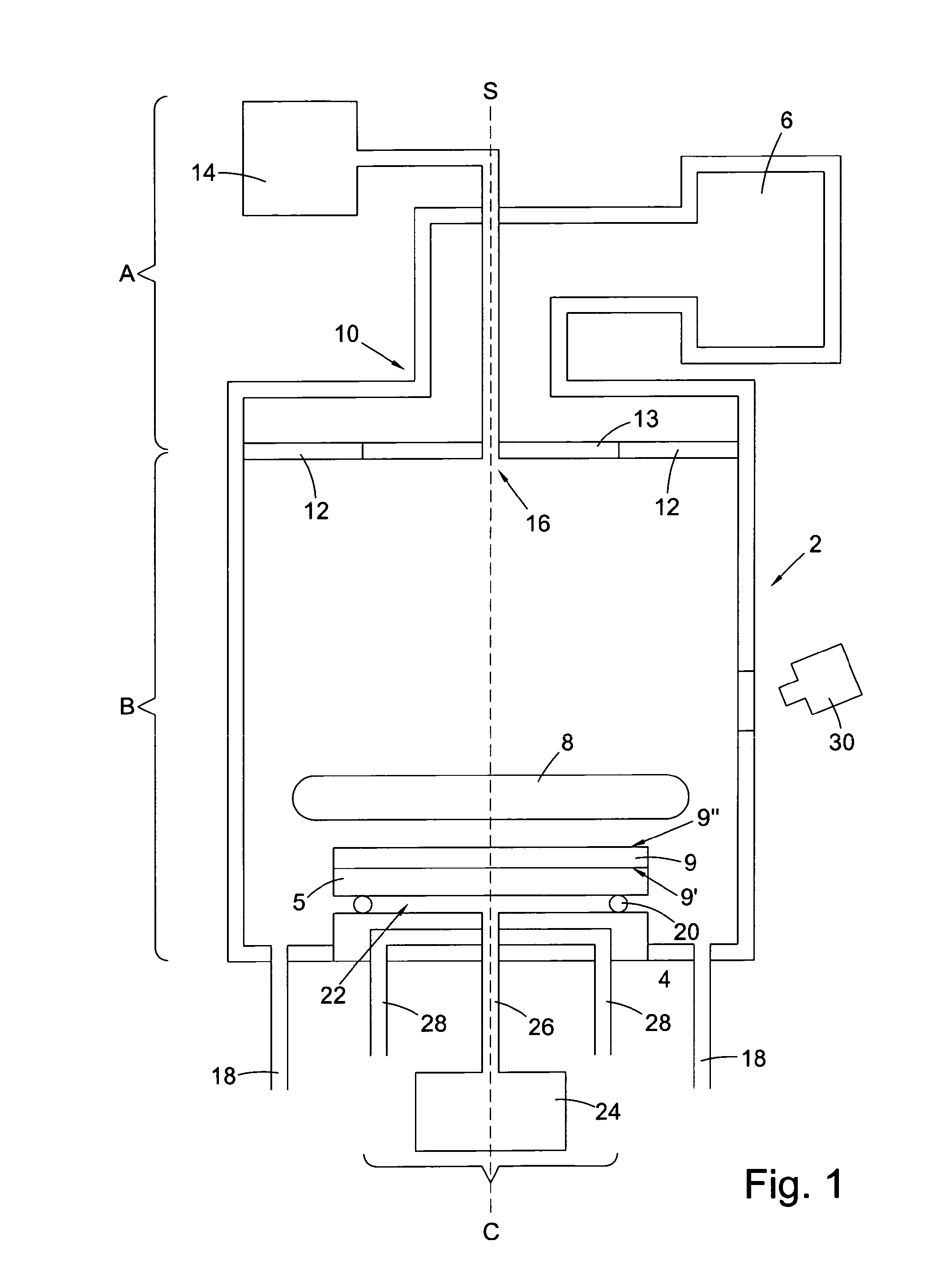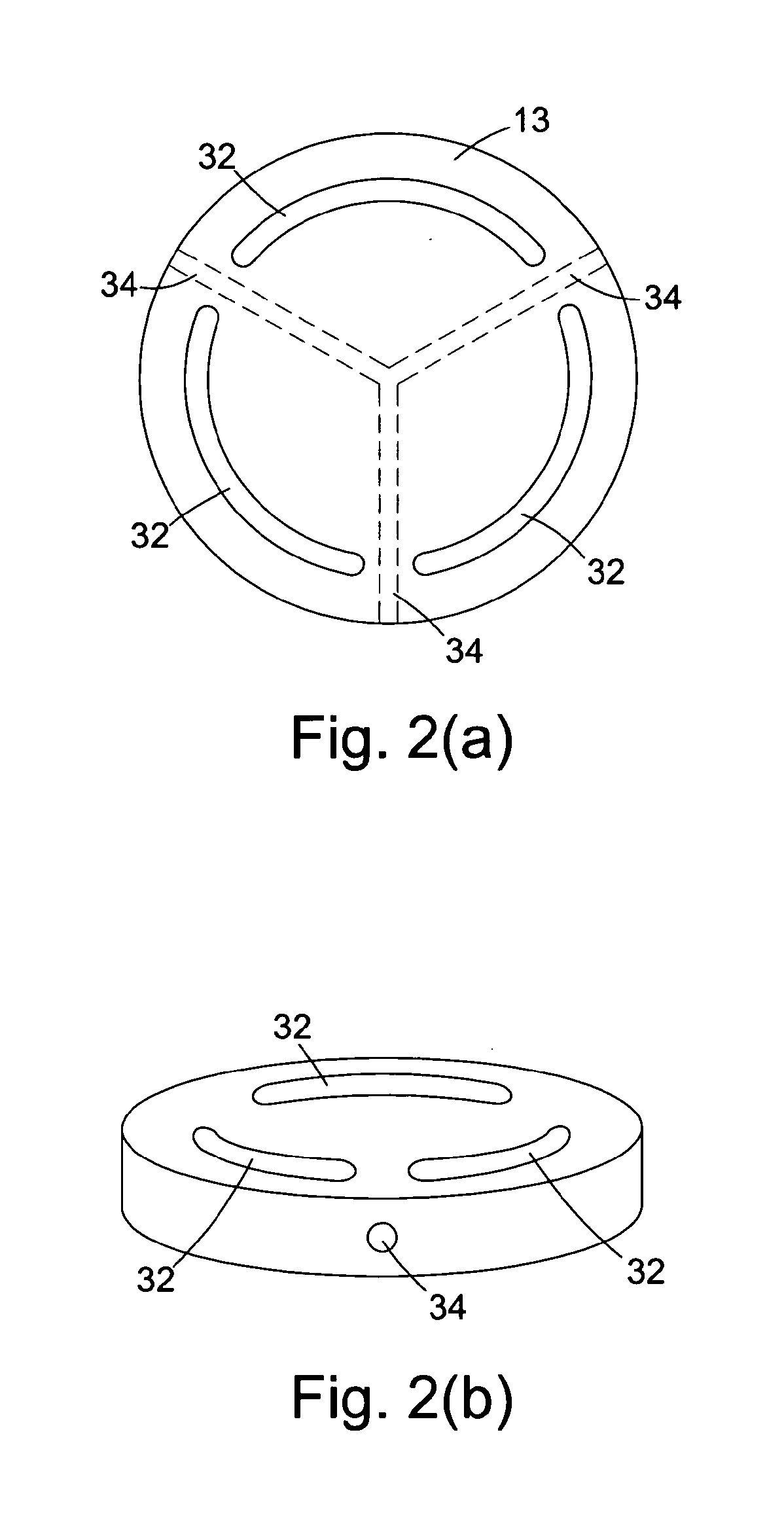Large area optical quality synthetic polycrystalline diamond window
a synthetic polycrystalline diamond and glass window technology, applied in the field of fabrication of optical quality synthetic polycrystalline diamond windows, can solve the problems of reducing reliant on relatively expensive feed gases. , to achieve the effect of increasing the exposure of dielectric window materials, high optical quality, and precise design tolerances
- Summary
- Abstract
- Description
- Claims
- Application Information
AI Technical Summary
Benefits of technology
Problems solved by technology
Method used
Image
Examples
example
[0181]A 140 mm diameter refractory metal carbide forming substrate suitable for synthesising polycrystalline CVD wafers was prepared using standard lapping and polishing processes to produce a surface with an Ra of 20-60 nm.
[0182]This substrate was introduced into a CVD reactor, and the synthesis process started. Reaction gases were flowed into the reactor at flows of 3500 / 43 / 43 sccm for Hydrogen / Methane / Argon. A controlled level of nitrogen was introduced to provide a concentration in the gas phase of 150 ppb, as quantified by optical emission spectroscopy.
[0183]The pressure in the chamber was kept at 185 Torr and the mean temperature of the substrate was adjusted to be 830° C. and was held at this point through the course of the growth run. The difference in substrate temperature from centre to edge was maintained at less than 30° C.
[0184]The synthesis process was terminated following a minimum diamond wafer deposition thickness of 1.0 mm. The diamond wafer was removed from the su...
PUM
 Login to View More
Login to View More Abstract
Description
Claims
Application Information
 Login to View More
Login to View More - R&D
- Intellectual Property
- Life Sciences
- Materials
- Tech Scout
- Unparalleled Data Quality
- Higher Quality Content
- 60% Fewer Hallucinations
Browse by: Latest US Patents, China's latest patents, Technical Efficacy Thesaurus, Application Domain, Technology Topic, Popular Technical Reports.
© 2025 PatSnap. All rights reserved.Legal|Privacy policy|Modern Slavery Act Transparency Statement|Sitemap|About US| Contact US: help@patsnap.com



